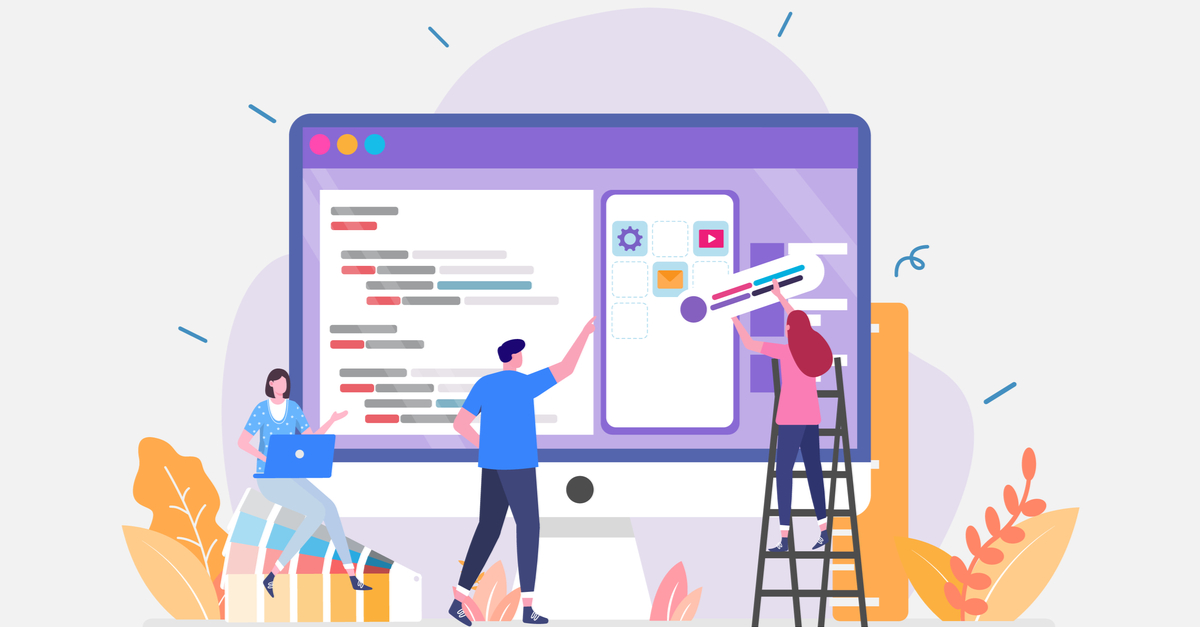Outsourcing has assisted businesses foster innovation and realize sustainable growth. However, before committing to outsourcing, getting the basics right is important to meeting your aspirations to differentiate and thrive. One of the fundamentals is the engagement model, which essentially defines the working relationship between the client and the software development vendor. It’s a contract between the two sides covering all details of the engagement. Once both sides agree to this contract, the governance of the project would be in accordance with its terms.
Ideally a contract is defined by:
- A well-detailed account of the client’s requirements.
- A clearly defined level of the client’s control over the project.
- Clear-cut deadlines worked out after careful consideration of the scope of work and budget.
- Details about the pricing model and the terms of payments.
| A recent survey claims that between 2020 and 2024, the estimated value of the global IT outsourcing market would reach USD 98 billion. |
A Glance at the Most Popular Engagement Models for Outsourcing Software Development

The Dedicated Team Model
This is the most trusted model in software development as it offers more flexibility and convenience. It’s an effective model for long-term and large-scale projects. It applies to projects with changing goals, which, in turn, could often change the scope of work of the development team. The outsourced team works in tandem with the in-house side, saving the client from the need to boost their in-house headcount.
Highlights of the Dedicated Team Model
Economical
It is way less expensive for the client to hire a team than to employ one, hence effective for projects with strict budgets.
Flexible
With the dedicated team of experts by their side, the client’s team can improve its efficiency and add new functionality to the product.
A Few Catches
The Need for the Perfect Team
To ensure success of the project, the client must have the right team, which can take a long time to choose. It needs complete involvement and consumes the precious time of the client.
Team’s Preferences
If the project specifications are not precise, the hired team might work as per their preferences, resulting in conflicting strategies and goals.
| 45% of global corporations have declared their intention of outsourcing more of their IT needs in the next 18 months. |
The Fixed Priced Model
As the name suggests, the fixed price model is inclusive of fixing the project scope, timelines, and cost- before the work begins. Therefore, it is the best fit when the client has a clear-cut project plan. This model stands on the pillars of accurate initial planning, estimation, and analysis. It’s often a no-brainer for projects that are for the short-term, involve MVP (minimum viable product) development, run on a limited budget, and have strict timelines.
Highlights of the Fixed Priced Model
Overall Transparency
The hired team works on plans and schedules and keeps the client posted regularly on project milestones. Furthermore, both sides know the exact amount the client can invest in the project.
Faster Outcomes
All steps are carried out as per a scheduled plan, making it easy for stakeholders to predict outcomes. This model requires marginal client supervision, enabling them to focus on other vital activities.
A Few Catches
No Adjustments Allowed
As all details are listed out before the development work begins, for any unplanned changes, the team must quit its current plan to focus on the new requirements, causing planned deadlines and deliveries to go haywire.
Additional Costs for Extra Work
If the client comes up with additional requirements, they must shell out more money. Moreover, if something goes off track, the stakeholders must adjust their schedule which might delay their regular plans and the launch of the software.
The Time & Material Model
One of the oldest and most conventional software models, here the client just pays as per the time the vendor invests and the material it uses in the development process. The client usually does not need a pre-determined budget and will pay as per the hours spent on management and development of the product. This model is best compatible with projects that are large in scale, start from scratch, and have unclear requirements, no rigid deadlines, and consistent workflows.
Highlights of the Time & Material Model
Rapid Adaptability
The Time and Material model enables stakeholders to implement changes quickly with iterations in the next project cycle. It supports changes in the technology stack, tools, etc., injecting flexibility into the project.
Faster Time-to-Market
This model adheres to an ongoing change method that makes it easy to spot software bugs in the early stages of development, which ultimately helps boost the product’s time-to-market.
A Few Catches
Uncertainty in Time and Budget Constraints
Since this model focuses primarily on time, the development needs can deviate at times. Because it doesn’t require a pre-determined budget, the overall cost also can also run wild for the client.
The Client Must invest Time
As this model is opted for an hourly, weekly, or monthly basis, for the best outcomes, the client should regularly follow up with the vendor. This is usually a big deterrent for clients lacking the resources to monitor outsourced projects.
A well-planned engagement model is essential to the success of any software development outsourcing model. It enables both sides to efficiently tackle or even totally avoid common development limitations such as delivery delays, mission-critical bugs, unforeseeable financial crises, etc., each of which can lead to resource drainage, sub-par quality, and longer turnarounds.
| Questions to Ask Before You Choose an Engagement Model Project Type – Is it a simple MVP project or a multi-faceted, complex one? Budgeting – Is it imperative to outline the budget at the start? Versatility – Will there be a need for last-minute alterations or additions to the product? Supervision – Will the client need to invest a lot of time supervising the project and even lead it? Deadlines – Is it imperative to deliver the product in the allotted time? |
Who We Are And Why You Can Count On Our App Development Expertise
As a leading provider of custom software services, the GetSmartCoders team is equipped to handle every type of engagement model our clients need. Our clients trust our expertise to fully develop software products from start to finish and deliver the exact requirements of the project. We begin every engagement with a detailed assessment of the project scope and suggest the right engagement model to the client, enabling them to easily circumvent any development disadvantages and ensure a smooth outsourcing experience.



